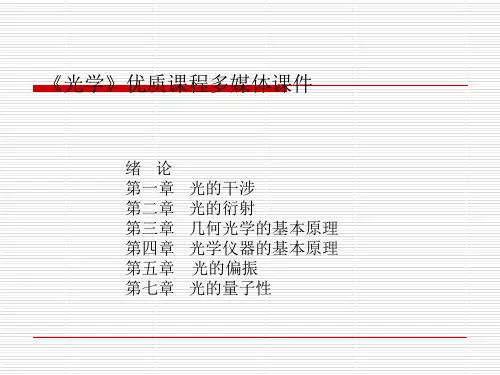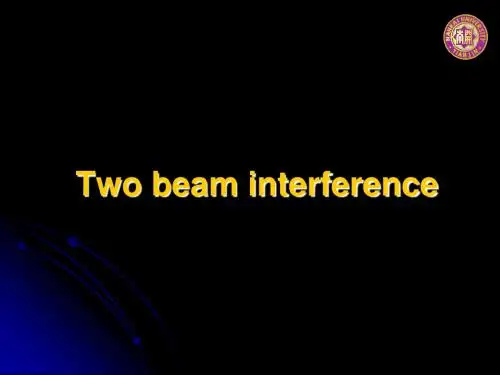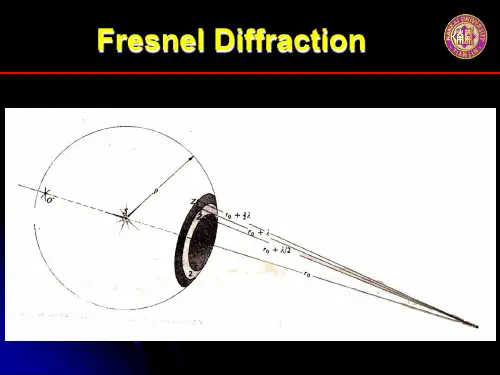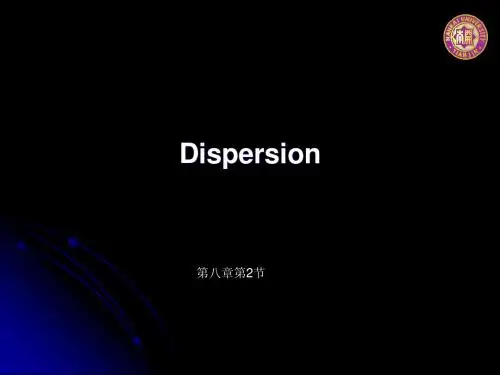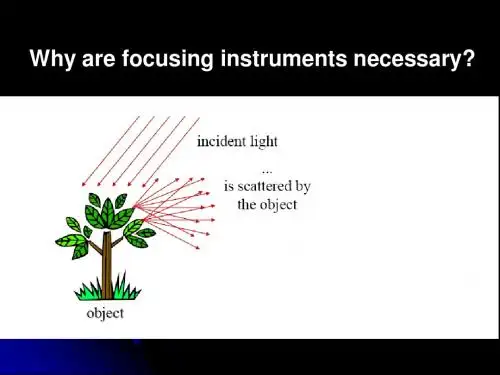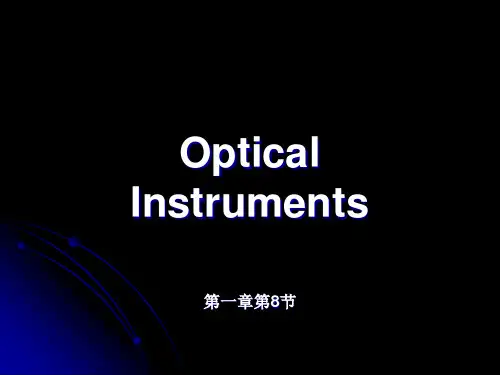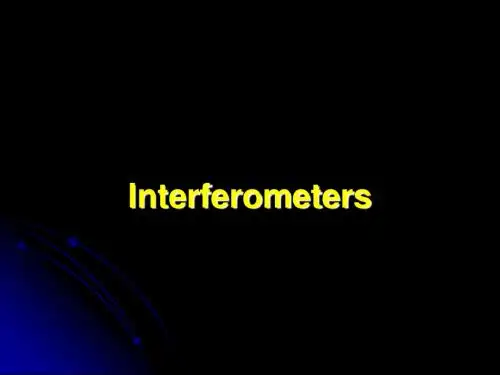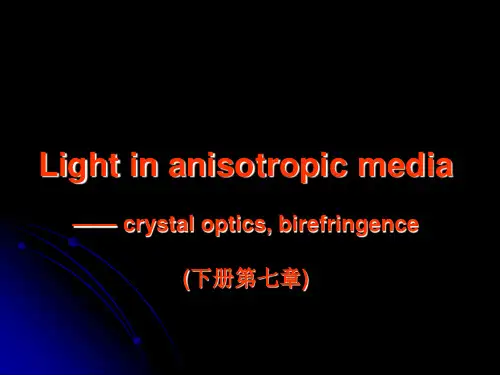- 1、下载文档前请自行甄别文档内容的完整性,平台不提供额外的编辑、内容补充、找答案等附加服务。
- 2、"仅部分预览"的文档,不可在线预览部分如存在完整性等问题,可反馈申请退款(可完整预览的文档不适用该条件!)。
- 3、如文档侵犯您的权益,请联系客服反馈,我们会尽快为您处理(人工客服工作时间:9:00-18:30)。
Its reduced form is
E bc(
sin
)(
sin N
)e
i [t kR ( N 1 ) ]
The flux-density distribution function is
I ( ) I 0 (
sin
) (
2
sin N
)
2
Fraunhofer Diffraction
Fraunhofer Diffraction
The Double Slit
Two long slits of width b and center-to-center separation a
Fraunhofer Diffraction
Analysis Each aperture, by itself, would generate the same single-slit diffraction pattern on the screen . At any point on , the contribution from the two slits overlap and each must be equal in amplitude and different in phase. The density distribution should be a combination of a rapidly varying double-slit interference system, modulated by a singleslit diffraction pattern.
I ( ) / I ( 0) 1.0 0.047 0.017 0.008 ......
Fraunhofer Diffraction
3. If the source emits whit light, only in the region about =0 will all of the constituent colors overlap to yield White light.
Fraunhofer Diffraction
Analysis According to the Huygens-Fresnel principle, a differential area dS, within the aperture, may be envisioned as being covered with coherent secondary point sources. But dS is much smaller in extent than , so that all of the contributions at P remain in phase and interfere constructively.
Fraunhofer Diffraction
Slit Pattern Diffraction Pattern
Diffraction from multiple slits
Infinitely many equally spaced slits (a Shah function!) yields a far-field pattern that’s the Fourier transform, that is, the Shah function.
a b / 2
E ( z )dz
Fraunhofer Diffraction
Where c is the source intensity per unit length along the z-axis and E=exp(it-k ( R-z sin )). Integration of the formula yields
E bc(
sin
)( e
i (t kR )
e
i (t kR 2 )
)
with =(ka/2)sin, = (kb/2)sin. 2 and 2 are the phase difference between two nearly parallel rays arriving at a point P on , from the centers of two slits and from the edges of one of the slits, respectively.
Fraunhofer Diffraction
Basic model (or question) —— point-source array
E0 ( r0 ) E0 ( r )e
i ( kRt )
sin N / 2 ( ) sin / 2
sin 2 [ N ( kd / 2) sin ] I I0 sin 2 [( kd / 2) sin ]
Fraunhofer Diffraction
It may occur that an interference maximum and a diffraction minimum correspond to the same -value, in this case no light is available at the precise position to partake in the interference process, and the suppressed peak is said to be missing order
Fraunhofer Diffraction
The linear source
L D sin i (t kR) E e R
1 L D 2 sin 2 I ( ) ( ) ( ) 2 R I (0)sinc
2
(kD / 2) sin
Fraunhofer Diffraction
Fraunhofer Diffraction
3. Minima of zero flux-density Exist whenever (sinN/sin)=0 or when
2 ( N 1) ( N 1) , ,..., , ,... N N N N
Between consecutive principal maxima (i.e., over the range in of ), there will be N-1 Minima.
Fraunhofer ห้องสมุดไป่ตู้iffraction
a=3b
kx1/z
Fraunhofer Diffraction
a=3b
Fraunhofer Diffraction
Diffraction by many slits
N long, parallel, narrow slits each of width b and center-to-center separation a.
E j bc
Here,
sin
exp[i (t - kR 2 j )]
ka sin 2
kb sin 2 So we have
E E j bc
j
sin
e i (t kR ) (e i 2 ) j
j 0
N 1
Fraunhofer Diffraction
Discussion 1. The flux density in the =0 direction I(0) =N2I0
2. Principal maxima Occur when (sinN/sin)=N. i.e. when = 0, , 2, …… or equivalently asinm=m m= 0, 1, 2, ……
One slit
Two slits
Fraunhofer Diffraction
Fraunhofer Diffraction
Discussion 1. The =0 direction = = 0 I(0) = 4 I0
2. b gets vanishingly small In this case, kb<<1, then sin/=1. The equation of I() reduce to the flux-density expression for a pair of long line sources, i.e. Young’s experiment.
Fraunhofer Diffraction
With the coordination system at the center of the first slit, the total optical disturbance at a point on the screen is given by
Fraunhofer Diffraction
Solution The total contribution to the electric field, in the Fraunhofer approximation, is then
E c
b/ 2
b / 2
E ( z )dz c
a b / 2
Fraunhofer Diffraction
4. Subsidiary maxima Located approximately at points where sinN has its greatest value, namely
3 5 , ,... 2N 2N
There are N-2 subsidiary maxima between consecutive principal maxima.
F ( z ) exp{i[t k ( R sin )]}
